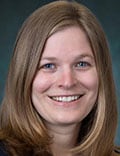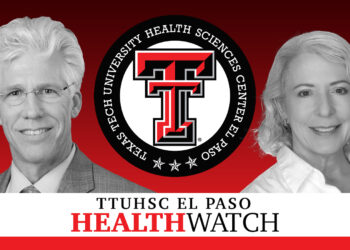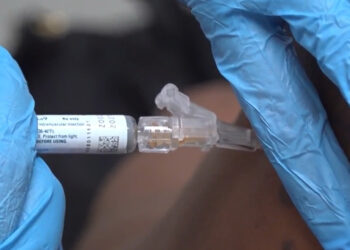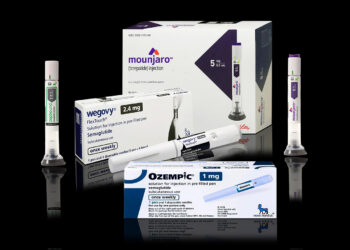Brittany L. Adler, MD, was a rheumatology fellow in 2017 when she evaluated a young woman with severe fatigue, dizziness, gastrointestinal symptoms, and a bluish discoloration in her feet.
Systemic sclerosis was suspected, but the patient didn’t meet all the diagnostic criteria. Adler was stumped until she happened to hear a preceptor mention postural orthostatic tachycardia syndrome (POTS), a condition she hadn’t recalled ever learning about in any of her medical training. “We ordered a tilt table test, which was positive. Her treatment path shifted dramatically. And I was left wondering: How many of these patients had I already missed?”

Probably quite a few, she now knows. “After seeing this patient, it became impossible to unsee it. I began recognizing POTS more frequently, especially in hypermobile young women. Their clinical histories followed a distinct, consistent pattern marked by orthostatic intolerance, widespread pain, fatigue, and gastrointestinal symptoms. Over time, this spectrum of illness became as real and recognizable to me as systemic lupus erythematosus or myositis,” Adler wrote in an essay published on July 23, 2025, in The Lancet Rheumatology.
Adler now works at the Johns Hopkins POTS Clinic in Baltimore, exclusively caring for these patients. The COVID-19 pandemic brought a surge of more patients with POTS and infection-associated chronic illness. “What had once felt like a rare or niche diagnosis now seemed to be everywhere, impossible to ignore,” she wrote.
In her essay, Adler urged her fellow rheumatologists to take on these patients, at least to become more familiar with the entirety of their illness burden and treat their symptoms as much as possible. She also called for rheumatology training programs to broaden their scope to include associated conditions such as POTS and myalgic encephalomyelitis/chronic fatigue syndrome (ME/CFS).
“Rheumatologists are uniquely trained to manage complex, multisystem illnesses. Yet the field has largely remained at the margins of infection-associated chronic illness and autonomic dysfunction, despite their clear overlap with autoimmune disease. Many other specialties have also declined ownership, leaving patients to fend for themselves,” Adler wrote.
But Adler told Medscape Medical News that she also doesn’t see rheumatology as the only specialty in this arena. “There is an enormous need for multidisciplinary clinics to manage these patients, as they experience symptoms across multiple organ systems. Right now, there is no model for coordinated care, so many patients end up seeing a different doctor each day and are in near-constant contact with the medical system.”
Many Diagnoses, Many Doctors, Few Answers Yet
Indeed, people with postinfectious chronic illness often receive multiple diagnoses from different clinicians, but there is no dedicated space for them in the current healthcare system, and as a result, their care is often suboptimal. Their diagnoses vary in number and degree and may include ME/CFS, dysautonomia/POTS, Ehlers-Danlos syndrome, fibromyalgia, mast cell activation syndrome, and long COVID, among many others.
Those with ME/CFS specifically experience extreme fatigue, postexertional malaise (PEM), orthostatic intolerance, and cognitive problems (aka “brain fog”).
Many can trace these symptoms to a specific infection such as SARS-CoV-2 or Epstein-Barr virus or to a bacterial infection such as Lyme disease. But for others, the infectious trigger may not have been confirmed or recognized at the time. They were healthy and active, then they weren’t. Some are severely disabled and can’t work, go to school, or even do simple tasks without feeling depleted and even sicker afterward.
The terminology is still being worked out. The umbrella terms “infection-associated chronic conditions (IACCs)” and “infection-associated chronic illnesses (IACIs)” have been used, along with the more specific “postacute infection syndromes (PAISs).” The terms PAIS and IACI are “increasingly used by authoritative organizations and very senior scientists,” Anthony L. Komaroff, MD, Simcox-Clifford-Higby Distinguished Professor of Medicine at Harvard Medical School and senior physician at Brigham and Women’s Hospital, both in Boston, told Medscape Medical News.

Komaroff, who has been researching and publishing about ME/CFS since the 1980s, also told Medscape Medical News, “As for the issue of which medical specialties will ‘own’ PAIS, I think that’s less important than having enough doctors knowledgeable about these illnesses to meet the need in every community, regardless of what subspecialty training they have. I think that will happen as the science becomes increasingly robust.”
He recently wrote a commentary on the topic for the Proceedings of the National Academy of Sciences, accompanying a paper identifying patient-reported treatment outcomes in ME/CFS and long COVID.
What All Doctors Can and Should Do, at a Minimum
Rheumatologist Brayden Yellman, MD, medical director of the Bateman Horne Center, Salt Lake City, told Medscape Medical News that he “agrees wholeheartedly” with Adler’s essay. “I do, ultimately, think that rheumatologists would be as adept as any clinicians at helping manage the more complicated presentations of those with IACCs and their related comorbid conditions.”

But, Yellman noted, several barriers are keeping rheumatologists from stepping up to the plate, including lack of a serologic biomarker or distinct imaging findings, lack of familiarity with the entire range of possible treatment approaches, and a shortage of rheumatologists to manage even patients with well-defined rheumatologic conditions.
In addition, Yellman noted, “We do not practice in a system that values or allows providers the time and resources necessary for good care of complex multisystem illness to begin with nor can this already taxed and flawed system take on more.”
Nonetheless, Yellman said, “With the extensive prevalence of these illnesses and the need for immediate action for the millions suffering from them, I concurrently believe that we need to demand better clinical care and support from all providers within the healthcare system, and particularly, those in primary care. At a very minimum, we need to be making the correct diagnoses in those with IACCs instead of telling them they ‘don’t have anything’ or that they have ‘functional neurological disorder.’ This type of dismissal can no longer be tolerated.”
Furthermore, “we need to be identifying PEM and helping to teach patients how to pace to avoid PEM. We need to be supporting patients’ needs for work and school accommodations or medical leaves of absence to help promote symptomatic improvement and to allow people to emerge from a cyclical push-crash cycle of PEM. We need to be, at a minimum, diagnosing dysautonomia and providing at least some basic support to promote improved vascular regulation. The entire healthcare system, and its providers, need to step up to this challenge.”
Are Long COVID Clinics a Model?
The multidisciplinary long COVID clinics that were established soon after that phenomenon emerged from the COVID-19 pandemic could serve as a model for treating all patients with chronic postinfectious illness, if there were sufficient support for them. However, many have either scaled back or closed entirely.
In Connecticut, for example, there had been at least 10 long COVID clinics, but now there is just one, the Yale New Haven Health Systems Long COVID Consultation Clinic. Medical director Lisa Sanders, MD, is the only MD provider, and she only works there part-time. “And we’re booked out until March,” she told Medscape Medical News.

Sanders does refer some patients with long COVID to specialists within the Yale system, most commonly cardiology or neurology, because “the most distressing symptom for most of these patients is not the shortness of breath, which gets better, and not the tachycardia, which can be managed, but the brain fog and the changes in cognition…which is probably the most common reason that people can’t go back to work.”
When she has more time, Sanders said she’d like to change the identity of the clinic from addressing just long COVID to encompassing other postinfectious conditions, given that “there are other illnesses…‘long COVID’ existed before COVID.”
Sanders, perhaps best known for her The New York Times columns, said she hopes that more clinicians take an interest in these patients, “but what I really hope is that we get some better answers than what we have so far…. We need better research. I mean, we can’t even agree on what defines long COVID or a postinfectious syndrome…really basic stuff.”
Adler, too, called for more research. “One development that I think is going to be transformative, and I don’t think we’re far off from this, is discovering a biomarker. As soon as there’s a blood test that can diagnose this syndrome, it will become much more tangible and accessible to doctors. I’m hoping the field will receive more research funding to make this possible.”
Adler and Yellman reported having no disclosures. Sanders reported receiving payments from The New York Times. Komaroff’s work was funded by a subcontract to Brigham and Women’s Hospital from the US Public Health Service.
Miriam E. Tucker is a freelance journalist based in the Washington, DC, area. She is a regular contributor to Medscape Medical News, with other work appearing in The Washington Post, NPR’s Shots blog, and Diatribe. She is on X at @MiriamETucker and on BlueSky at @miriametucker.bsky.social.
Source link : https://www.medscape.com/viewarticle/where-medical-home-postinfectious-illness-2025a1000m05?src=rss
Author :
Publish date : 2025-08-20 12:39:00
Copyright for syndicated content belongs to the linked Source.












